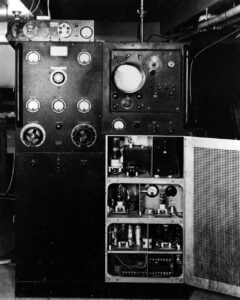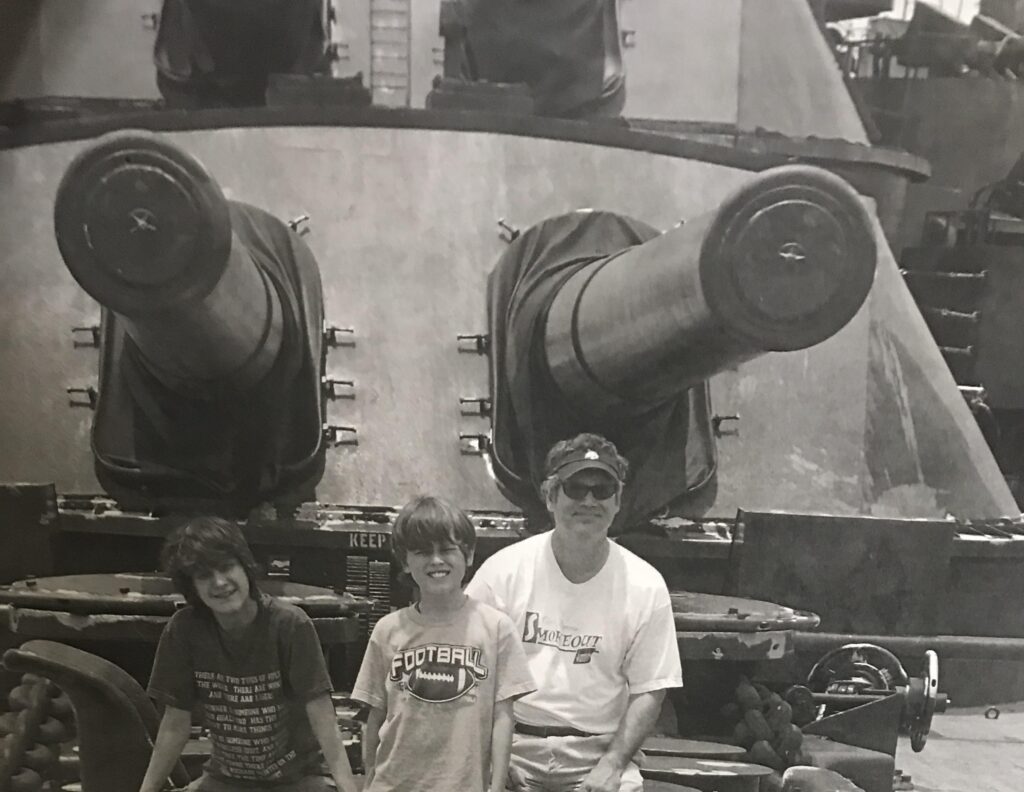USS Texas Plays Role In Introduction of Radar

My love of history has been sparked by many things, but chief among them was living in San Antonio as a young boy.There I visited the Alamo and other historic missions, saw John Wayne’s movie, “The Alamo,” and visited the battleship USS Texas (BB-35) on a trip to Houston. Our parents, my sister, and I toured the ship when I was in second grade or so, and I fell in love with her. As you can see by the picture, my wife and I took our sons to tour her about 15 years ago.

Two weeks ago I spent much of the morning watching the livestream as she was towed from her berth next to the San Jacinto monument to the dry dock in Galveston where she will be undergoing a major overhaul. She is a grand old lady, a World War I veteran who then earned five battle stars in Europe and the Pacific during World War II. She participated in D-Day (serving as the flagship at Omaha Beach), Iwo Jima, and Okinawa. As an older battleship, she was too slow to keep up with the fast carrier task forces so her primary missions focused on convoy duty and shore bombardment during amphibious invasions.1
In my research on the USS Franklin (CV-13) I am studying the role of radar. Radar was still not 100% effective in March of 1945 and the USS Franklin’s radar failed to warn it of the incoming bomber that nearly sank it. Wanting to learn more about the role of radar and how it evolved during World War II, I found a great source in Timothy S. Wolters’ book, “Information At Sea.”
The USS Texas Becomes A Test Bed
There I came across a role played by the Texas of which I had not been aware. According to the book, in the late 1930’s, senior leaders in the US Navy’s Bureau of Engineering realized that the use of radar needed to be incorporated into ships of all types to provide the greatest possible advantage in a conflict.
A decision was made to install an early version of radar, designated XAF on the Atlantic Squadron’s flagship, the USS New York (BB-34). Not wanting to rely solely on one type of radar the Bureau of Engineering contracted with RCA to produce a model which operated on a different wavelength. This model was designated CXZ and was installed on the USS Texas in January of 1939.2
The results of this competition was that the New York’s XAF model clearly outperformed that of the CXZ in the Texas. Wolters wrote:
Disappointed with the CXZ’s performance, Texas’s commanding officer remarked that the RCA’s equipment “would be of very little value in war,” while his superior informed the Bureau of Engineering that “the XAF equipment was in all respects (except size) markedly superior to the CXZ.”3
Two serious problems were that the vibration of the Texas’ 14-inch guns “caused parts to deteriorate,” and that the maximum range of the CXZ radar was half that of the XAF and could not detect aircraft more than five miles away.
While it was the radar model on the New York and not the Texas that won the competition, the Texas did play a role in the adoption of radar and the rooms the radar sets were housed in are the ancestors of what is now known as the Combat Information Center (CIC), the brain of the modern warship.4
Future of the USS Texas
Currently in drydock in Galveston, she is undergoing a multi-year $35 million badly needed renovation. The Battleship Texas Foundation which manages the museum ship has yet to announce where her home part will be after her repairs are complete. Baytown, Galveston, and Corpus Christi have all been mentioned. Each has positives and negatives associated with them. It doesn’t matter to me where they move her, they could moor her on the Concho River in San Angelo for all I care. I just can’t wait to visit her again.
Sources
1Battleship Texas Foundation Website Homepage. Accessed 09 Sept 2022
2Wolters, Timothy S. (2013). Information at Sea: Shipboard Command and Control in the US Navy, From Mobile Bay to Okinawa (1st ed.). The John Hopkins University Press. pp 179-180
3Ibid. p 180
4Ibid p 180